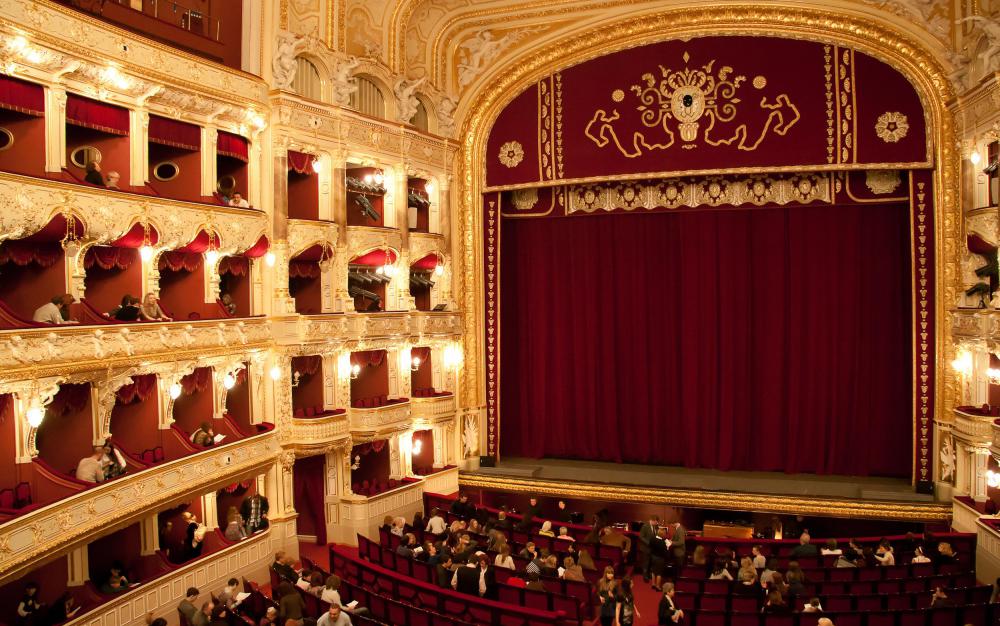At WiseGEEK, we're committed to delivering accurate, trustworthy information. Our expert-authored content is rigorously fact-checked and sourced from credible authorities. Discover how we uphold the highest standards in providing you with reliable knowledge.
What is the Barber of Seville?
Pierre-Augustin Beaumarchais wrote a play in French titled Le barbier de Séville — The Barber of Seville — the first of a projected four plays about a character named Figaro, in 1772. It was to form the basis of many operas, of which the most well-known are these four:
- a German version by composer Friedrich Ludwig Benda with a libretto by Gustav Friedrich Wilhelm Grossman in 1776;
- an Italian version by composer Giovanni Paisello with a libretto whose authorship is uncertain, but likely by Giuseppe Petrosellini in 1782;
- an Italian version by composer Nicolas Isouard from the same libretto as Paisello set around 1796; and
- an Italian version by composer Gioachino Rossini from a libretto by Cesare Sterbini.

Rossini’s version of The Barber of Seville is a commedia in two acts and premiered in Rome at Teatro Argentina on 20 February 1816, making it surprising that it is said to have been written in 1816. How is this possible? Rossini bragged to Richard Wagner in 1860 that he composed The Barber of Seville in twelve days! The opera flopped on the first night, with accidents on stage and proponents of Paisello causing disruptions. But the opera became a success in about a year, and today stands as one of the most popular of all operas.
The story of The Barber of Seville takes place in Seville in the 1600’s, where Count Almaviva is romantically interested in the ward of Dr. Bartolo, Rosina, whose guardian goes to great ends to protect her because he wants to marry her himself. Because he wants Rosina to love him for himself, not his money, the Count is in disguise as a student named Lindoro. After an ineffective serenade of Rosina, the Count and Figaro, the Barber of Seville, meet, and the Count learns that Figaro—due to his role as barber, etc. — is frequently in Dr. Bartolo’s house. Rosina appears on the balcony as they speak and drops “Lindoro” a message. Dr. Bartolo doesn’t quite see that, but is aware that something is afoot, so he heads off to finalize his wedding plans, giving orders that no one is to enter the house.
Lindoro sings a serenade to answer the note, but Rosina is interrupted before she can respond, and the men determine to get into the house and formulate a plot to effect this, which involves the Count disguising himself as a drunk soldier who has been billeted at the house. Figaro talks his way in and talks with Rosina, angering Bartolo. Don Basilio, the town music teacher and marriage broker arrives, and agrees with Dr. Bartolo that haste is needed, especially as the attractive Count Almaviva is rumored to be in town, and they plot to slander him to get him to leave. The act ends with the soldier’s appearance, followed by the entrance of Basilio and Figaro, with great confusion, an attempted arrest of the soldier, who somehow avoids being detained.
In Act II of The Barber of Seville, Almaviva arrives at the house disguised as Don Alonso, reportedly a music teacher sent by Don Basilio, who is said to be indisposed. Don Alonso earns Dr. Bartolo’s trust by confiding that he’s intercepted a note from Count Almaviva to Rosina and that he will convince Rosina that the Count is not to be trusted in the course of the music lesson. Contrary to this promise, the Count waits till Bartolo falls asleep and uses the lesson to further court Rosina.
Upon discovering that Don Basilio has no knowledge of Don Alonso, Dr. Bartolo realizes what has happened and determines to wed Rosina immediately, sending for a notary. He also tells Rosina that Lindoro is acting on the Count’s behalf, which angers her, so that when Figaro and the Count enter—having climbed a ladder to the balcony, rather than using the door — they have a good deal of explaining to do. The time it takes to convince Rosina of the Count’s good intentions is time during which someone removes the ladder. But when Don Basilio arrives with a notary, he is bribed with a ring and a death threat, and witnesses the marriage of Rosina to Count Almaviva, rather than to Dr. Bartolo, who enters with soldiers when it is too late. Dr. Bartolo accepts his defeat, and all celebrate.
AS FEATURED ON:
AS FEATURED ON:











Discuss this Article
Post your comments